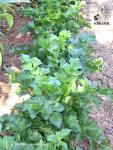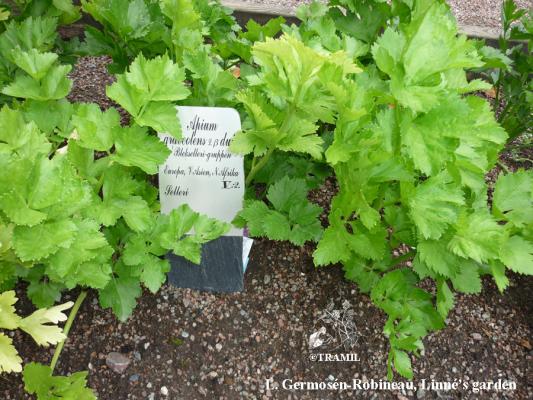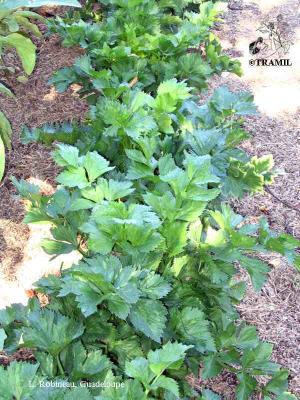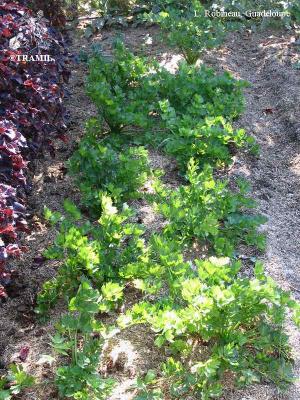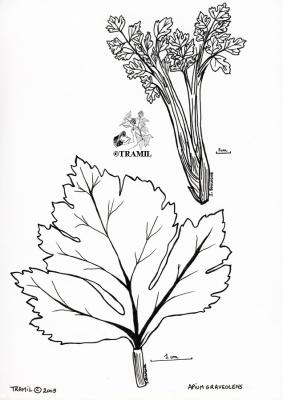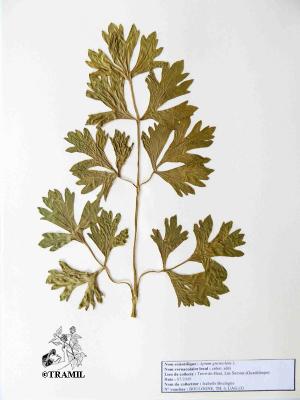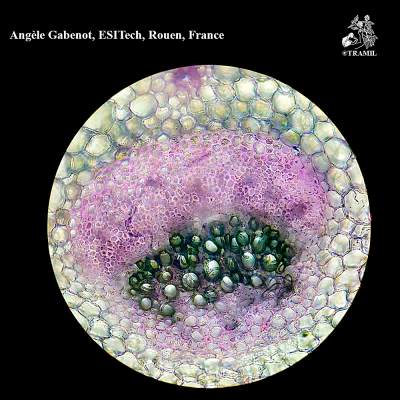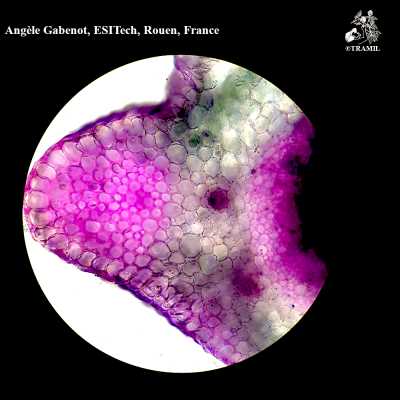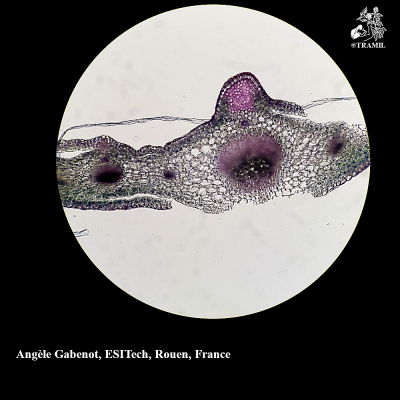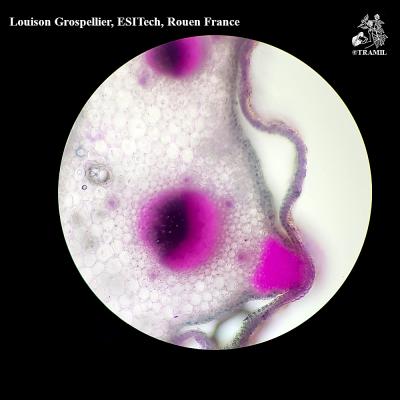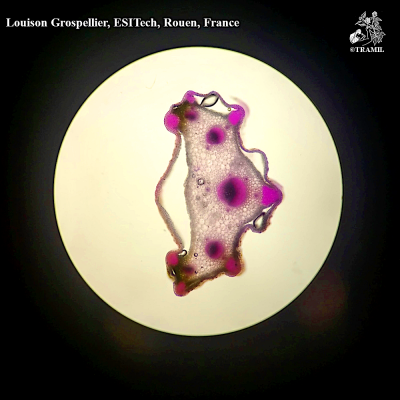Apium graveolens
Vernacular names
(In territories with significant traditional TRAMIL use)
Guadeloupe:
- céleri
- sèlri
Geographical distribution
Native to Eurasia, widely cultivated in various parts of the world.
Botanical description
Biennial or perennial herb with a strong smell, sparsely branched, glabrous, 30 cm to 1 m high. Longitudinally striated stem. Alternate leaves, 3 to 25 cm long, petioles with a sheathing base, composed of a few leaflets with a deeply lobed or dentate margin; the upper leaves are smaller than the lower ones and are short petiolate or subsessile. Umbels composed of 6 to 16 small almost sessile umbels or on short peduncles, less than 1.5 cm long. Small, radially symmetrical, hermaphrodite, white flowers; minute calyx, attached to the ovary with 5 free petals The fruit is almost circular, approximately 2 mm long, compressed laterally.
Voucher(s)
Boulogne, TH6, UAG
Pharmacopoeia
Ed.3References
1 BOULOGNE I, 2008
Enquête TRAMIL à Terre-de-Haut, Les Saintes (Guadeloupe). TRAMIL-UAG.
2 GOLD HF, WILSON III CW, 1963
The volatile flavor substances of celery. J Food Sci 28:484-488.
3 GOLD HJ, WILSON III CW, 1963
Alkylidène phthalides and dihydrophthalides from Celery. J Org Chem 28:985-987.
4 LUKOVNIKOVA GA, 1965
Some biologically active compounds of vegetables. Prikl Biokhim Mikrobiol 1:504507.
5 ALWANAH, JAWAD ALM, AL-BANA AS, ALI KF, 1988
Antiviral activity of some Iraqi indigenous plants. Int J Crude Drug Res 26(2):107-111.
6 KHAN M, JAIN DC, BHAKUNI RS, ZAIM M, THAKUR RS, 1991
Occurrence of some antiviral sterols in Artemisia annua. Plant Sci 75:161-165.
7 LEWIS DA, THARIB SM, VEITCH GBA, 1985
The anti-inflammatory activity of celery Apium graveolens L. (Fam. Umbelliferae). Int J Crude Drug Res 23(1):27-32.
8 AL-HINDAWI MK, AL-DEEN HIS, NABI MHA, ISMAIL MA, 1989
Anti-inflammatory activity of some Iraqi plants using intact rats. J Ethnopharmacol 26(2):163-168.
9 MENCHERINI T, CAU A, BIANCO BIANCO G, DELLA LOGGIA R, AQUINO RP, AUTORE G, 2007
An extract of Apium graveolens var. dulce leaves: structure of the major constituent, apiin, and its anti-inflammatory properties. J Pharmacy and Pharmacology 59:891–897.
10 GARCIA-GONZALEZ M, LIZANO-FALLAS V, BERROCAL-MORALES B, ZUÑIGACHAVEZ I, 2009
Toxicidad aguda dosis repetida, en ratones, del extracto acuoso de partes aéreas de Apium graveolens. Informe TRAMIL. PRONAPLAMED. Depto de Fisiología, Escuela de Medicina, Universidad de Costa Rica, San Pedro, Costa Rica.
11 HENRY SA, CANTAB MD, CANTAB DP, 1933
Celery itch: dermatitis due to celery in vegetable canning. Brit J Dermatol 47:301-309.
12 HENRY SA, CANTAB DP, 1938
Further observation on dermatitis due to celery in vegetable canning. Brit J Dermatol 50:342.
13 DESTA B, 1994
Ethiopian traditional herbal drugs. part III: anti-fertility activity of 70 medicinal plants. J Ethnopharmacol 44(3):199-209.


